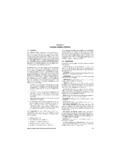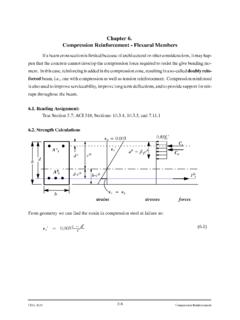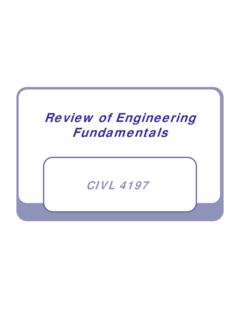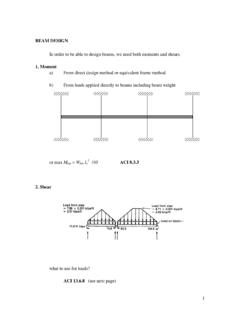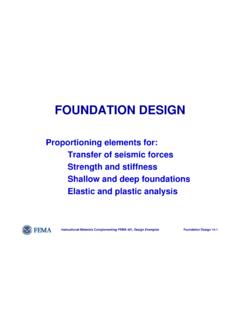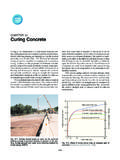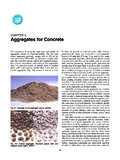Transcription of A System Description and a Literature Review Survey for ...
1 A System Description and a Literature Review Survey for Rail Intermodal container terminal 1 Operations 2 3 Boidapu V. 4 Graduate Research Assistant, Center for Intermodal Freight Transportation Studies Memphis, Department 5 of Civil Engineering, University of Memphis, Memphis, 3815 Central Ave. Memphis, TN 38152, USA, 6 Phone: 901-678-3286, Fax: 901-678-3026, Email: 7 8 Golias 9 Assistant Professor, Department of Civil Engineering, University of Memphis, Memphis, 3815 Central 10 Ave. Memphis, TN 38152, USA, Phone: 901-678-3048, Fax: 901-678-3026, Email: 11 12 13 Ivey S. (Corresponding author) 14 Assistant Professor, Department of Civil Engineering, University of Memphis, Memphis, 3815 Central 15 Ave.
2 Memphis, TN 38152, USA, Phone: 901-678-3286, Fax: 901-678-3026, Email: 16 17 18 Lipinski 19 Ensafe Professor, Department of Civil Engineering, University of Memphis, Director, Center for 20 Intermodal Freight Transportation Studies Memphis, 3815 Central Ave. Memphis, TN 38152, USA, 21 Phone: 901-678-3279, Fax: 901-678-3026, Email: 22 23 24 25 26 27 28 29 30 31 32 33 34 35 36 37 38 39 40 41 42 43 Word Count: 6 346 44 Figure and Tables Count: 4*250=1,000 45 Total Words: 7 346 46 47 48 Submitted for consideration for presentation at the 89th Transportation Research Board Annual 49 Meeting and Publication at the Journal of the Transportation Research Board 50 51 Boidapu V.
3 , Golias , Ivey, S. Lipinski 2 ABSTRACT 1 Rail intermodal container terminals are open systems of material flow with two external interfaces: a) the 2 track side, where containers are (un)loaded on the incoming and outgoing trains or transshipped from one 3 train to another, and b) the landside where containers are delivered or picked-up by trucks. From an 4 operational point of view the terminal can be divided into three parts: a) the rail side operations, b) the 5 storage yard side operations, and c) the gate side operations. For management of the entire yard 6 operations, informed decisions are critical for the smooth flow of the containers and trains within the 7 terminal and the transit time of containers in the whole network.
4 In this paper we present a detailed 8 Description of the layout and different processes of these terminals and a brief Literature Review of related 9 research studies in the hope that it will promote and increase future research efforts. 10 11 12 13 14 Boidapu V., Golias , Ivey, S. Lipinski 3 INTRODUCTION 1 Global containerized trade is increasing and it is predicted to reach 129 Million TEU1 by year 2011, 2 representing an increase of over 200% from 2001. The US DOT s Federal Highway Administration 3 predicts that the US will also be affected by this increase of trade and experience an overall doubling of 4 international freight by 2020. This projected growth in the global trade will result in a larger volume of 5 containers required to be handled in intermodal terminals and transported over land and will escalate 6 congestion problems at the nodes and links of the freight transportation network.
5 As rail yards are 7 important components of this network and given its resulting economic, operational and environmental 8 implications, it is evident that optimizing operations within these terminals will attract significant 9 attention by the industry and the academic research community in the years to come. 10 A rail intermodal container terminal (from now on referred to as terminal ) is an open System of 11 material flow with two external interfaces: the track side, where containers are (un)loaded on the 12 incoming and outgoing trains or transshipped between trains, and the landside where containers are 13 delivered or picked-up by trucks. From an operational point of view the terminal can be divided into three 14 parts: the rail side operations, storage yard side operations and the gate side operations.
6 These operations 15 include the management of the whole yard and the decisions are very critical for the smooth flow of the 16 containers and trains within the terminal and the transit time of the whole network. The rail side 17 operations consist of the scheduling of the inbound and outbound trains, breaking of the inbound trains 18 and the creation of the outbound trains. It also includes (un)loading of the containers onto the trains 19 which are of two major types: a) containers that are attached to a chasse ( chassis on flatcars or 20 roadrailers), and b) containers that are not attached to a chasse. Containers can be transported on the 21 flatcars in different ways that include: a) double stack, where the containers are stacked one on top of the 22 other on a flat car, b) single stack with one 53ft, 48 ft, 40 ft or one or two 20ft containers, c) piggybacks 23 on flat cars, d) roadrailers which have rail wheels attached to the trailer to be suitable for movement on 24 both rail and road and e) special containers ( tank containers).
7 Storage yard operations consist of 25 decisions relating to the allocation of containers in the yard for storage and the movement of the 26 containers between the three main areas of the terminal ( the track side, the storage yard, and the gate 27 area). Finally, the gate side operations consist of transporting the incoming containers to their respective 28 areas in the yard and the pick-up of the outgoing containers by trucks. Each one of these three systems 29 works independently but also interacts with the other parts and thus optimizing all of the operations 30 within a truck-rail intermodal container terminal becomes a very challenging task. 31 The purpose of this paper is to provide a detailed System Description of a rail intermodal terminal , 32 and to present a summary of the major research studies on modeling and simulation efforts for the 33 operations of these terminals, in the hope that it will promote and simplify future research efforts.
8 The 34 paper is partitioned into five sections. The first three sections describe in detail the operations and layout 35 of the three terminal areas, while the fourth section presents a Review of the majority of the related 36 Literature . The last section concludes the paper and suggests a very important future research direction. 37 38 TRACK SIDE OPERATIONS 39 Trains arrive at the terminal via the main line (also known as the feeder line) which needs to be kept free 40 at all times to allow trains to enter and exit the terminal and thus it is never used as a waiting area for 41 trains. The main line leads to the waiting and service tracks (fig. 1). The yard also includes maintenance 42 tracks for the engines and the other rolling stock.
9 The service tracks can consist of a single or multiple 43 tracks (excluding the main line). If a train arrives on time the engine and caboose are detached from the 44 train and the crew is relived from duty. The train then goes through the inspection process where both the 45 train and the containers are checked for damages. The train then proceeds to the scheduled service tracks 46 where the available handling equipment (un)load the containers or transship them from one train to 47 another. Some of the major factors influencing the assignment of the train to specific tracks include: a) the 48 1 Twenty foot equivalent unit Boidapu V., Golias , Ivey, S.
10 Lipinski 4 number of tracks available in the rail yard, b) the optimum travel route of the container , c) the operations2 1 required on the train, d) its arrival time relevance to other trains etc. The scheduling of freight trains on 2 the tracks should avoid deadlocks and minimize the number of crane moves. If the number of trains 3 arriving on time exceeds the service tracks capacity then the trains are prioritized based on different 4 policies ( freight versus passenger priorities, arrival time or priorities or policies formulated by 5 government). If a train arrives early or late, it is rescheduled based on the position of the other trains and 6 availability of service tracks.
